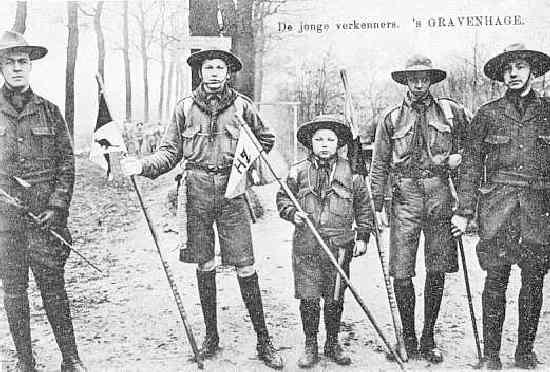
Figure 1.--These Dutch Scouts were photographed at the Hague in 1910. It is one of the earliest known photographs of Dutch Scouts and chronicles the spread of Scouting to the continent.


Figure 1.--These Dutch Scouts were photographed at the Hague in 1910. It is one of the earliest known photographs of Dutch Scouts and chronicles the spread of Scouting to the continent. |
Scouting in Holland started in 1910. That year the first Scout troops were formed in a few cities. In the next decades Scouting organisations were established for boys and two for girls. Scouting quickly becamevthe most popular activity for Dutch boys. The movement was, however, disrupted during the World War II German occupation when the NAZIs at first discouraged and then outlawed Scouting. An excellent history of scouting in the Netherlands and other occupied countries is available. The NAZIs tried to organize a rival organization, but fe Dutch boys joined. Some Scouting was continued clandestinely, but Scouts could not wear their uniforms. The Scouting movement was quickly restablished after liberation. Since 1973 all five Dutch Scout groups are united in one organisation called: Scouting Nederland. Scouting Nederland has the objective: to promote the Scouting programme in The Netherlands, based on the ideas of Lord Baden-Powell, in order to offer to boys and girls pleasant leisure activities, through which a contribution is made to the development of their personality. The total membership figure (all ages) of 1992 is, according to the annual report: nearly 115,000; i.e. 85,000 juniors and 30,000 adults (not all adults are leaders, so please don't interpret the figure as a 3:1 rate!). Scouting Nederland is a member of both WOSM and WAGGGS.
Scouting in Holland started in 1910, a few years before World War I. That year the first Scout troops were formed in a few cities. Unlike most other European countries, the Dutch managed to remain neutral in World War I. The Germans invaded neutral Belgium to the South, but did not invade the Netherlands. In fact the Dutch Goverment allowed Kaiser Wilhelm II refuge when he abdicated and refused demands from the Allies to turn him over for procecution after the War.
In the next decades Scouting organizations were established for boys and two for girls. Scouting quickly became the most popular activity for Dutch boys. We have very little information on Dutch Scouting during this period. We know that Cubbing exoisted, but am not sure when it was founded.
The Dutch Scouting movement was disrupted during the World War II by the German invasion in May 1940. The Ntherlands was occupied until libeation by the Allies in the Spring of 1945. The NAZIs at first discouraged and then outlawed Scouting. An excellent history of scouting in the Netherlands and other occupied countries is available. The NAZIs tried to organize a rival the Jeugdstorm, a NAZI-approved organization for boys (and girls in their own department), but few Dutch boys joined. Some Scouting was continued clandestinely, but Scouts could not wear their uniforms. All Scout troops got an invitation to join the Jeugdstorm. There were posters on trees and walls with the words: "Come and join the Jeugdstorm!" This youth (jeugd means youth in Dutch) movement
was founded in the Netherlands by the the Dutch Nazi party (NSB) around 1934.
It was something like the Hitler Jugend, but the uniform was different. The shirt was sky-blue of color, the shorts were black, If I remember correctly the scarf or neckerchief was also black or dark-blue, there was no swastika anywhere but instead some other not so offensive Nordic sign like a seagull. The most interesting thing of this uniform was
the head covering. It looked like the black velvet "topi" Indonesian Muslims are
wearing. They were black also, but the material was like angora wool with tiny black curls. On top vertically through the center was an opening that showed an orange-colored fabric, as shiny as silk, actually amazing, because orange was a very patriotic Dutch color, after all the royal family is the House of Orange-Nassau. In spite of this conciliatory design it is needless to say that very few Dutch Scouts joined the Jeugdstorm. Many Dutch Scouts were active in the Resistamce. A Dutch reader reports, "Once in a while you saw a Jeugdstormer in his blue uniform wearing a pair of brown corduroy shorts. Than you knew he was an ex-boy scout, a 'traitor'." Actually it proved dangerous for older boys to join the Jeugdstorm. It was organized like the Hitler Youth to recruit boys into the military. Many Jeugdstorm boys died on the Eastern Front in Dutch units fightening with the Wheremacht.
The Scouting movement was quickly restablished after liberation. Since 1973 all five Dutch Scout groups are united in one organisation called: Scouting Nederland. Scouting Nederland has the objective: to promote the Scouting programme in The Netherlands, based on the ideas of Lord Baden-Powell, in order to offer to boys and girls pleasant leisure activities, through which a contribution is made to the development of their personality. The total membership figure (all ages) of 1992 is, according to the annual report: nearly 115,000; i.e. 85,000 juniors and 30,000 adults (not all adults are leaders, so please don't interpret the figure as a 3:1 rate!). Scouting Nederland is a member of both WOSM and WAGGGS.
Navigate the Historic Boys' Uniform Chronology Pages:
[Return to the Main chronologies page]
[The 1900s]
[The 1910s]
[The 1920s]
[The 1930s]
[The 1940s]
[The 1950s]
[The 1960s]
[The 1970s]
[The 1980s]
[The 1990s]
[The 2000s]
Navigate the Historic Boys' Uniform Web Site:
[Return to the Main DutchScout page]
[Activities]
[Biography]
[Chronologies]
[Countries]
[Essays]
[Garments]
[Organizations]
[Other]
[Bibliographies]
[Contributions]
[FAQs]
[Questions]
[Unknown images]
[Boys' Uniform Home]
Navigate the Historic Boys' Uniform Web organizatiion pages:
[Return to the National Scout page]
[Boys' Brigade]
[Camp Fire]
[Hitler Youth]
[National]
[Pioneers]
[Royal Rangers]
[Scout]
